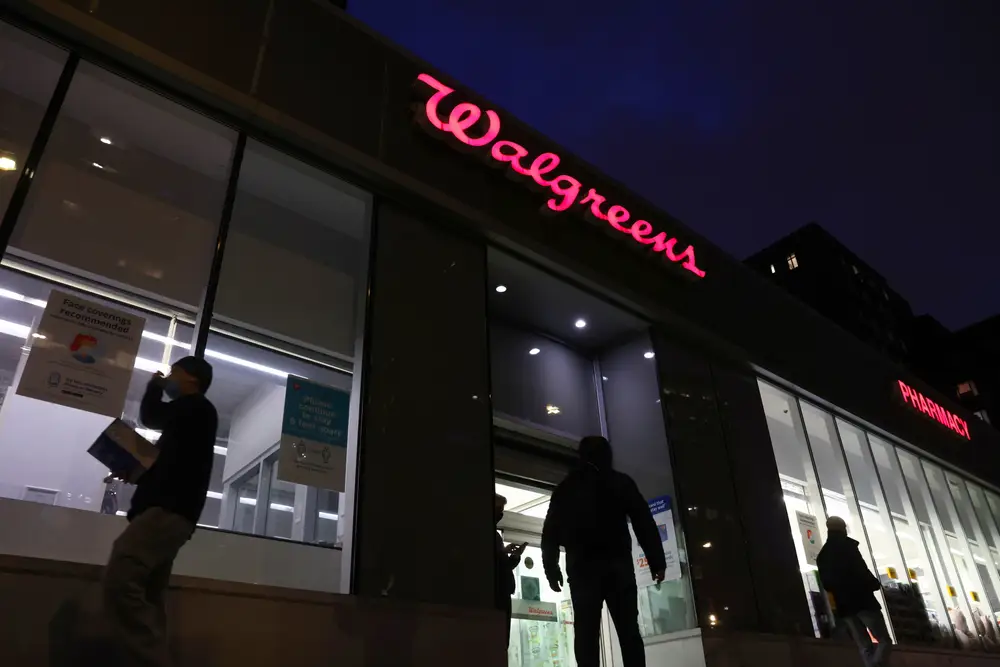The US is facing a drugstore graveyard as stores close. Filling the leftover spaces is the next challenge.

Walgreens recently announced that it’s closing 1,200 stores over the next three years.
America’s retail pharmacy giants are undergoing an uncomfortable period of decline as more customers question their convenience.
For years, landlords viewed drugstores as stable tenants in shopping centers since customers relied on them for prescriptions.
That made them attractive fits for prominent storefronts, including as anchor tenants for small shopping centers, said Steven Teitelbaum, a professorial lecturer at American University’s Kogod School of Business who previously practiced commercial real-estate law at Jones Day.
Known in the industry as a “junior box” — as opposed to a big-box store like Walmart or Target — these 20,000-square-foot spaces were often purpose-built to support pharmacies’ dual business of dispensing medication in the back and snacks in the front.
Thousands of drugstores are expected to close over the next several years, including CVS, Walgreens, and Rite Aid stores. Walgreens CEO Tim Wentworth said in June that the retail pharmacy industry was “largely overbuilt for where the future was going to be.”
The pullback raises the question: What happens to the empty spaces drugstores leave behind?
Walgreens told B-17 that the company works with community stakeholders to minimize the disruption to customers when a store is set to close.
“When we do close a store that has a lease term remaining, we explore several options, including buyouts, subleases, and renegotiating the rate. Maintaining the lease without occupancy is our option of last resort,” a Walgreens spokesperson said. “More often than not, we successfully find a new tenant which is beneficial to our business, consumers, and the community.”
In cases where the closing stores’ leases dictate that tenants have to keep paying rent, some landlords may opt to leave the spaces empty, especially in downtowns and other dense urban environments, Teitelbaum told B-17. In other cases, such as when a drugstore closes in a suburban shopping center, the loss of a drugstore can mean a drop in shoppers visiting the area, he added.
“They tend to have good locations on corners and as the anchor tenants in small shopping centers, so when they close, it’s an obvious, in-your-face phenomenon,” Teitelbaum said.
That can impact other businesses in the shopping center, which often rely on anchor tenants like drugstores and supermarkets to draw people in. The loss of foot traffic can have a negative ripple effect on the landlord, even if the closed store continues to make rent payments.
It’s not always obvious what kind of business could slot into the leftover space — but some companies see opportunities in the locations.
Wentworth said on the company’s third-quarter earnings call that Walgreens locations are “widely acknowledged to be on the best corners in America.”
“We believe there’s the opportunity to not simply carry the lease as a dark store,” he said. “There’s gold in them hills, as they say.”
US retail-vacancy rates are at historic lows of around 4%, according to data from the property-management giant Colliers, and asking rents are nudging higher as prospective tenants compete for space.
“When you have a junior box, that is like gold to a landlord,” Anjee Solanki, Colliers’ head of retail services, told B-17.
Solanki said she sees a broad range of post-pharmacy uses for the format, from sporting goods, furniture, and apparel stores to beauty salons. Some landlords are subdividing larger units to offer space to a mix of smaller businesses.
“There’s just so many amazing concepts out there,” she said.
Some of the real-estate investment trusts, or REITs, that own these properties see other potential uses for the spaces.
“They’re good spots for urgent cares,” John Albright, the CEO of Alpine Income Property Trust, a REIT that counts Walgreens as a tenant, said on an earnings call in July. Other possible tenants include fast-casual restaurants, dollar stores, and schools, Albright said.
Teitelbaum told B-17 that no single type of tenant is likely to take up most of the empty storefronts. Many potential retail tenants, such as grocery stores, need more parking and other accommodations for their high foot traffic relative to pharmacies. Others, such as restaurants, would require kitchens and other expensive renovations.
“They have ranges of sizes and formats, and you can’t just say, ‘Well, we’ll just convert them all to pickleball courts or urgent care,'” he said.
A CVS spokesperson said 95% of the company’s closing locations are leased, while 5% are owned.
“We make every effort to market available properties and find new tenants as soon as possible. In most instances, we sublease to other tenants to ensure the property is utilized and contributing to the community,” the CVS spokesperson said.
A Rite Aid spokesperson said that the company routinely evaluates its store network and is “committed to becoming financially and operationally healthy.”
Compared to store closings in the 2010s, many of the closures now are happening in a more orderly fashion and coming onto the property market at a pace that allows them to be absorbed in a reasonable period of time.
Solanki said that in the aftermath of the pandemic, retailers and landlords realized they needed to work together and have forged stronger relationships.
Whereas a normal lease-renewal conversation might have happened within a year of the contract’s expiration, those agreements are being reached with 24 to 30 months of lead time, giving the parties involved time to plan, Solanki said.
She also said half of the retail real-estate deals tracked by Colliers last quarter were on the market for less than three months. So while retail pharmacies have been criticized for failing to offer US shoppers something new and exciting, their replacements seem willing to bet they can use the locations to do just that.
“That 50% is a strong number,” Solanki said.





